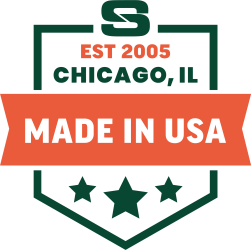Low Emissivity Glass
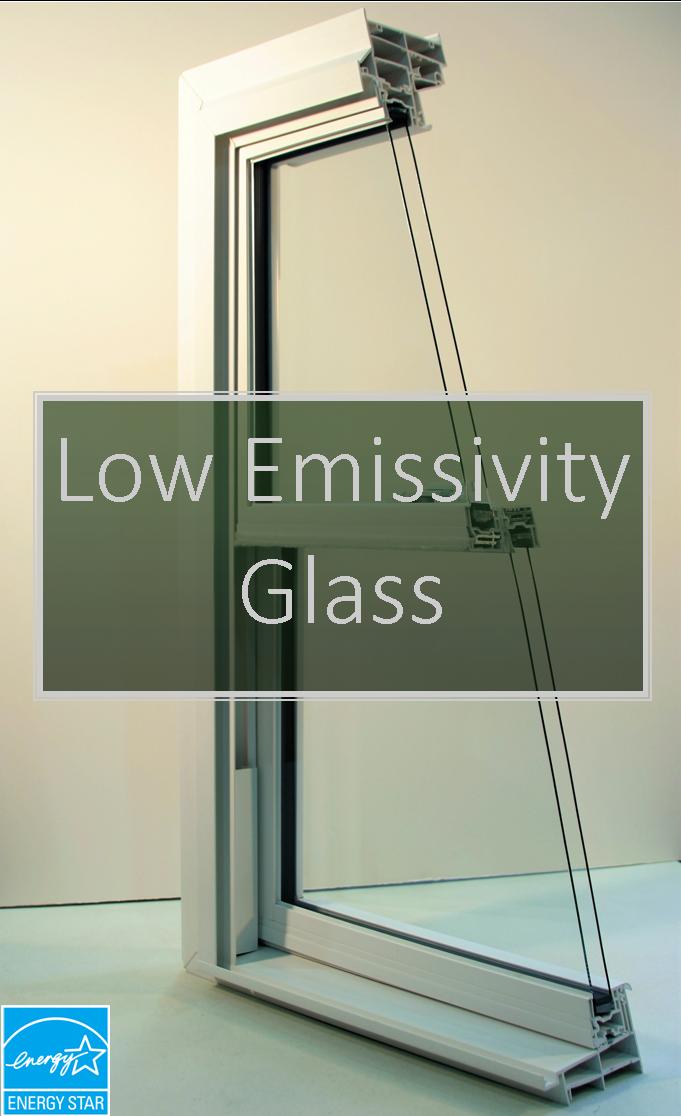
There are times it can be tough to make all the right decisions when ordering windows (one of the many reasons to makes rue you get the right contractor/installer). You’ve decided on what type of window you’re looking for, you know the grid pattern, the color, the series and then on top of that you’re asked what type of glass you want! This article will help you answer this question and understand what Low Emissivity glass is and how it is used.
Climate Solutions specializes in using Low Emissivity (Low-E) glass which has a coating on one surface of the glass that reduces energy transfer. In layman’s terms that low emissivity/energy transfer means it significantly reduces hot or cold transferring through the glass (and in or out of your home).
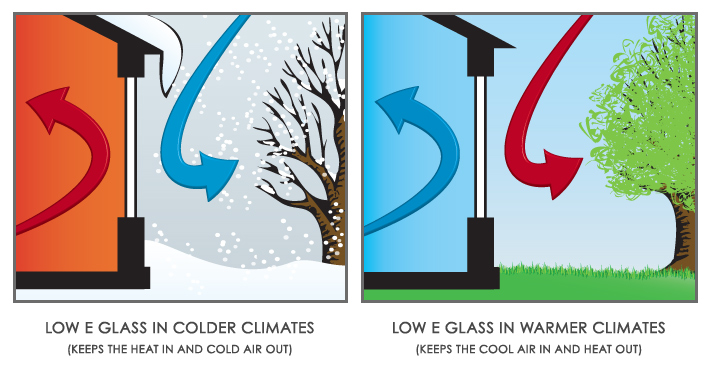
There are three main Low-E coatings we use, LoE-272, LoE-366 and i89 glass, all of which perform differently and can be combined to easily exceed Energy Star 2016.
First of all – the science behind it: The sun gives out lots of Thermal radiation which is reflected by the multiple layers of silver in the coating on the glass. Simultaneously, longwave radiation from inside your house, for example radiators, flooring and even body heat, is prevented from escaping by the glass – this means your house keeps inside temperature consistent without letting the outside temperature influence it.
The benefit is clear – the less energy you lose through poor glazing the more efficient your home will be. The more efficient your home, the lower your energy bills. With Low-E Glass you can save up to 25% on your energy bills.
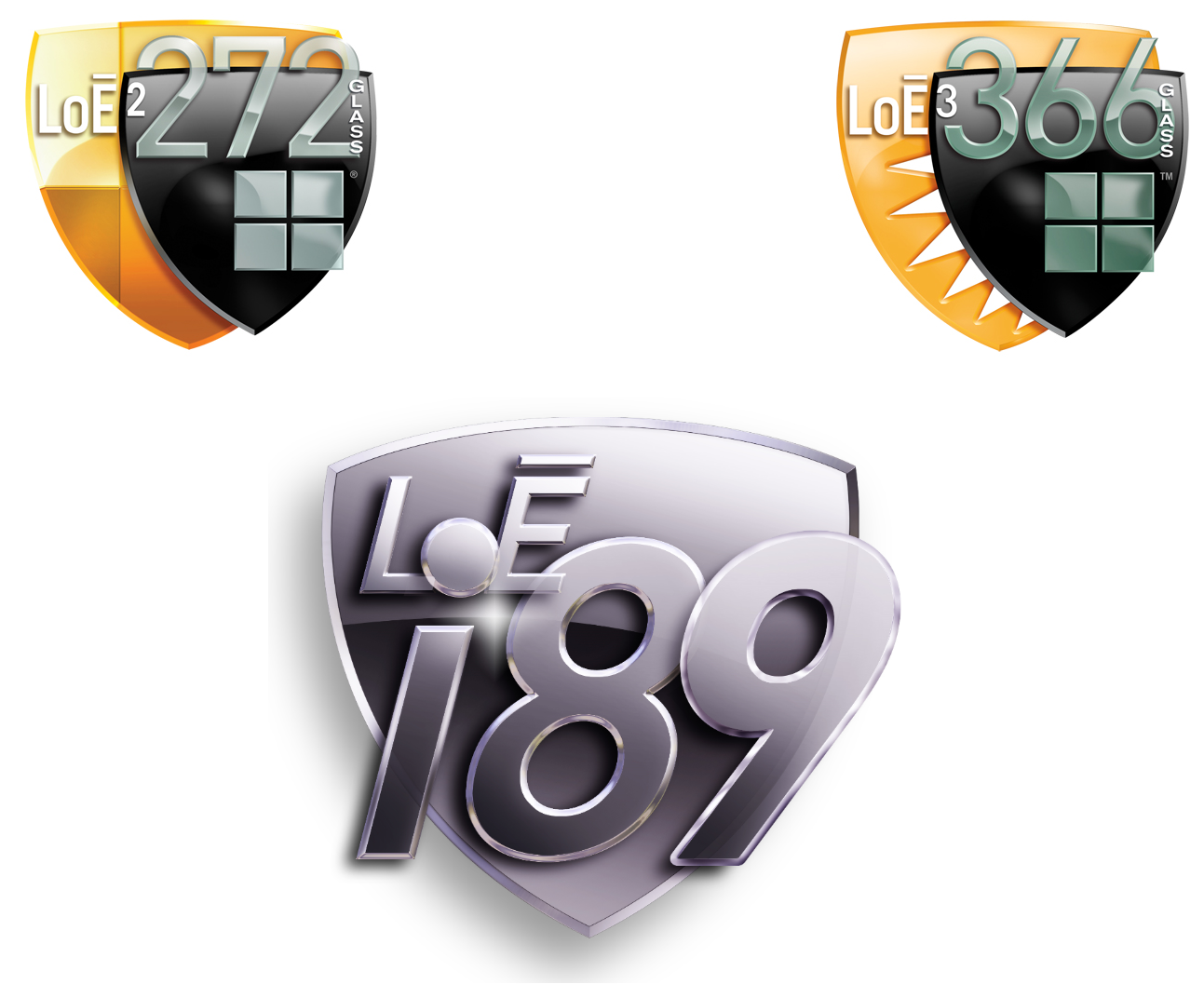
What’s the difference between LoE-272, LoE-366 & i89?
LoE-272 and LoE-366 are soft coats that go on a surface that is inside the glass unit (so it can’t be touched). The i89 is a hard coat that is on the interior surface of the window, the one that faces inside the home. Because it is a specially formulated hard coating it is tough enough to be exposed, but it is only used in combination with the other types of glass – LoE-272/LoE-366.
In its simplest form it is down to the number of layers – LoE-272 has 8 layers in its coating, whilst LoE-366 has 12 layers. These layers are what do the work of reflecting the heat all the while letting light into your home. The glass with more layers, LoE-366 performs the best.
This is measured in three ways, that appear on your NFRC label – U-Factor (basically energy-efficiency – the lower the number the better), Solar Heat Gain Coefficient (how much of the sun’s heat gets through the window, the lower the number the better) and Visible Transmittance (how much light is obstructed by the window, the higher the number the better).
Energy Star®
Using LoE-272 will make an enormous difference compared to regular clear glass, or even hard-coat LowE products, but the clear winner is LoE-366. Here you can see that LoE-366 is the only coated glass that performs to Energy Star standards in all climate conditions in the United States:
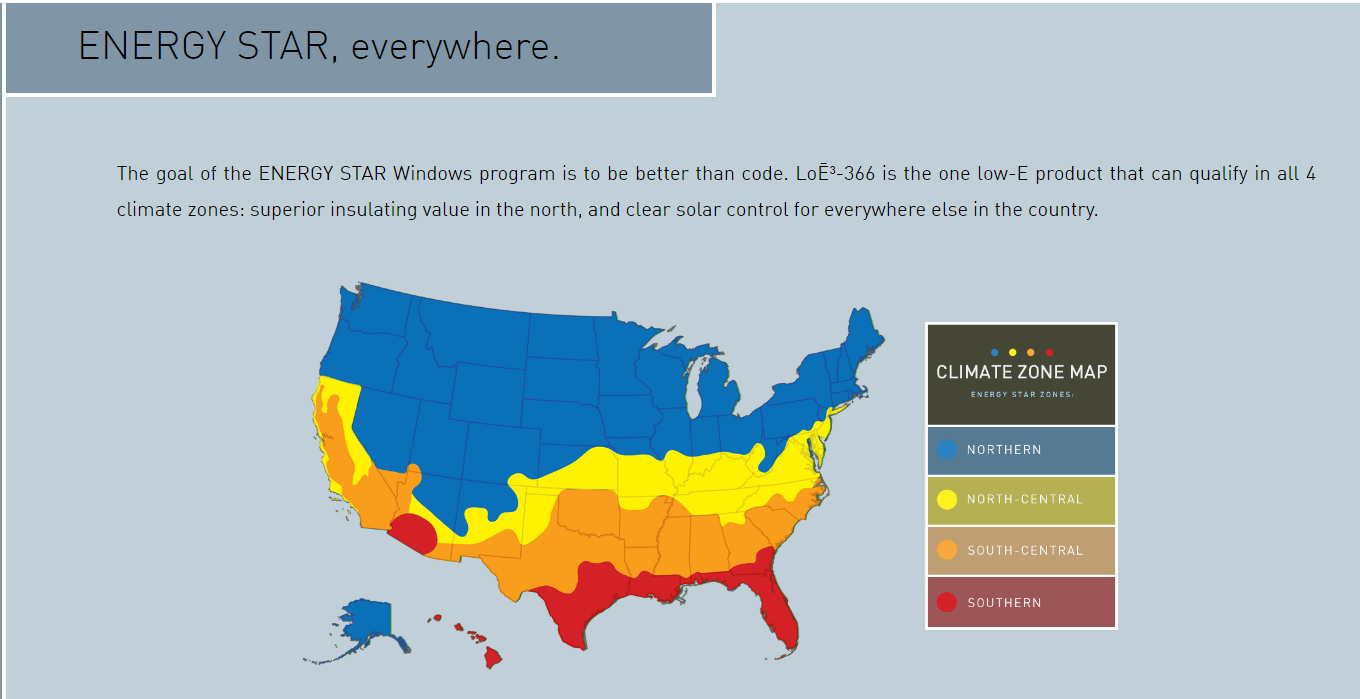
To put it in practical terms – when it’s cold you’ll stay warmer and when It’s warm you’ll keep the cool in your house – here’s a table showing what the relative temperature difference will be using the LoE-366 glass:
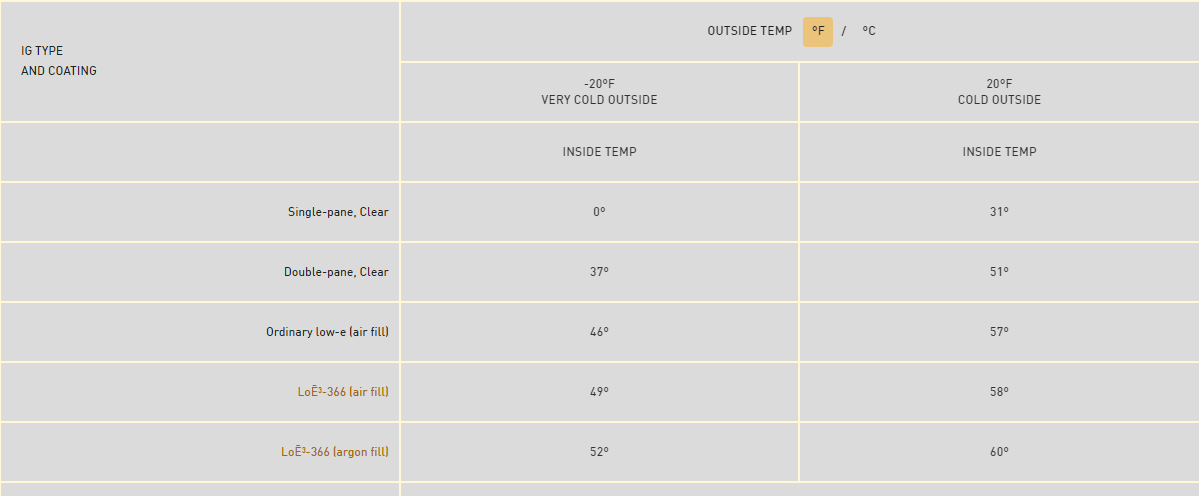
If you have Southern or Western facing windows then we’d particularly recommend using LoE-366 because it will provide greater protection against the infrared heat rays from the sun. Again, without using too much scientific terminology what does this mean for you? Well, it will reduce the harmful effects of those rays and the benefits include less heat coming through and even protecting your furniture and fittings from light-fading.
To ensure that Energy Star is hit and exceeded the recommendation is pairing the LoE-366 and the i89 together – with this combination every Climate Solutions window and door is guaranteed to exceed Energy Star standards.
If you have any questions don’t hesitate to get in touch via our online contact form or call in on 1.847.233.9800.


